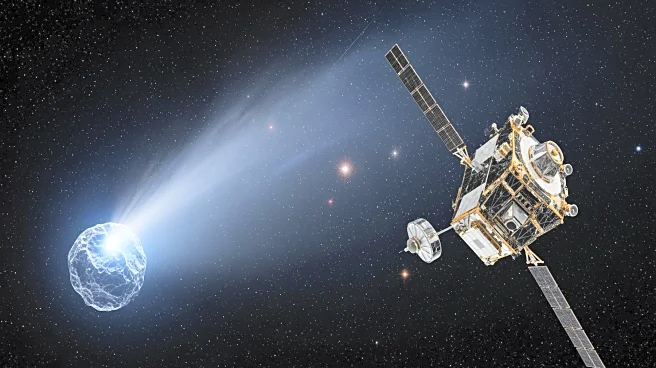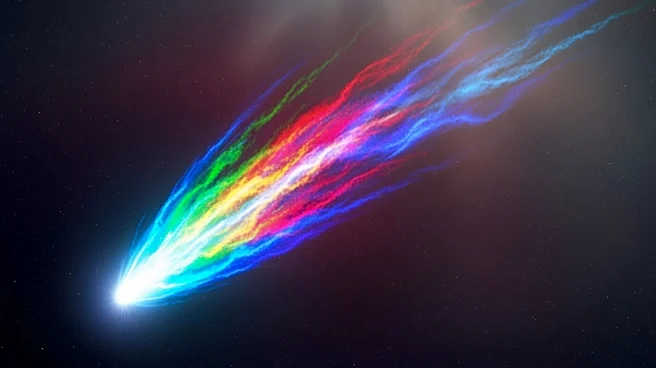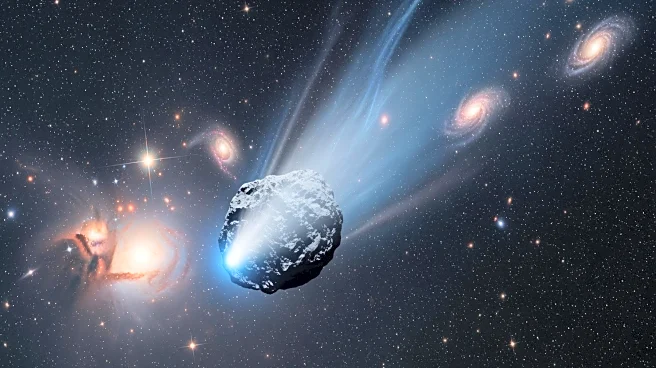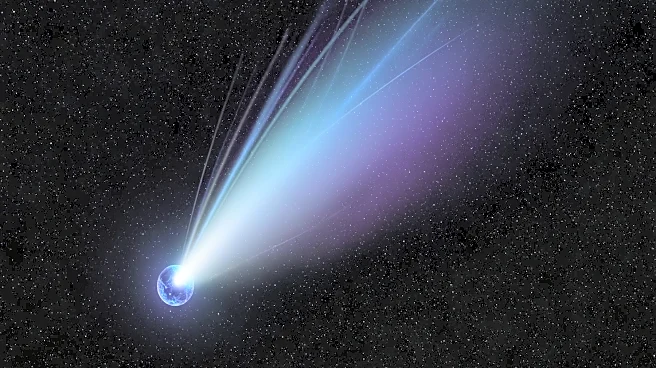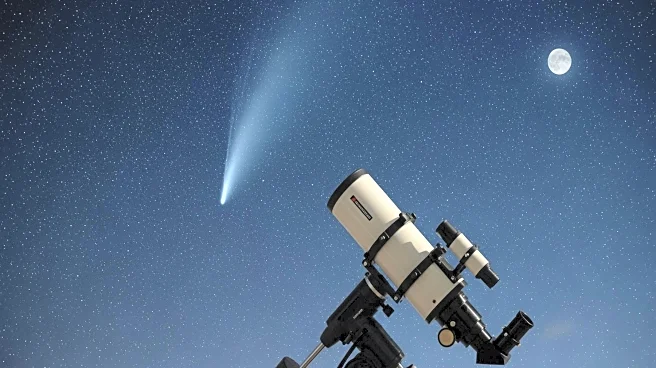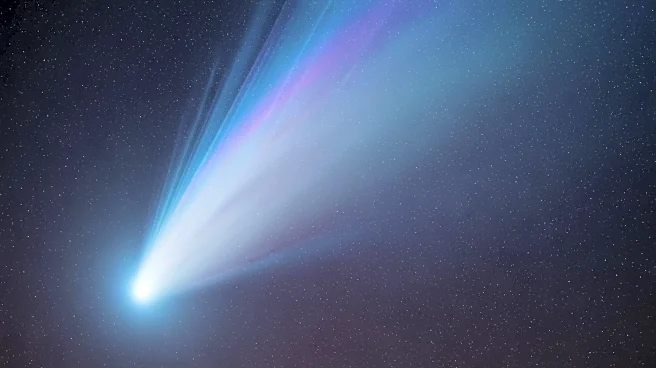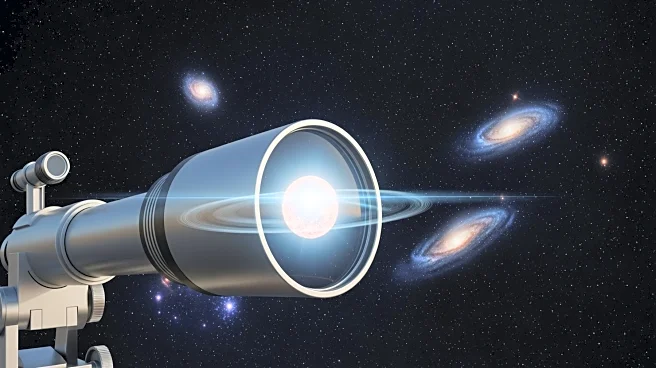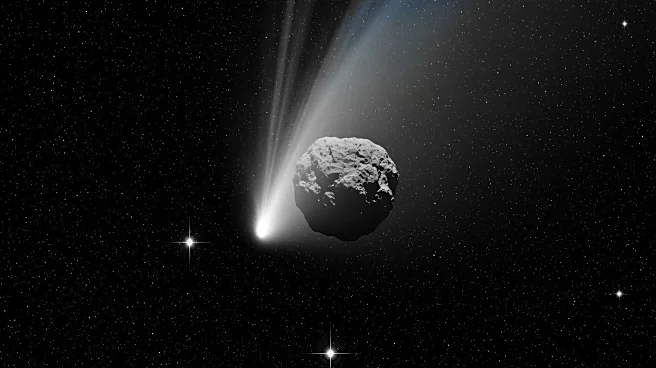What's Happening?
China's Tianwen-1 Mars orbiter has captured rare images of the interstellar comet 3I/ATLAS during its close approach to Mars in early October 2025. The orbiter's high-resolution camera photographed the comet from approximately 30 million kilometers away,
marking one of the closest probe-based observations of the comet to date. The images, along with a short animation, were released on November 6, 2025. The comet has exhibited unusual behavior, including a shift in color towards blue and signs of non-gravitational acceleration, which researchers are still trying to explain. The comet's appearance has changed multiple times, with previous observations noting red and green hues. The comet's perihelion occurred around October 30, 2025, and it is expected to make its closest approach to Earth on December 19, 2025.
Why It's Important?
The observation of 3I/ATLAS by China's Tianwen-1 orbiter provides valuable data for scientists studying interstellar objects. The comet's unusual behavior, including its color changes and non-gravitational acceleration, offers insights into the physics and chemistry of interstellar comets. These observations can help improve models of cometary behavior and contribute to our understanding of objects originating outside our solar system. The data collected by Tianwen-1, along with observations from other space agencies, will allow scientists to triangulate the comet's behavior from different perspectives, enhancing the accuracy of scientific models.
What's Next?
As 3I/ATLAS continues its journey, scientists will closely monitor its behavior, particularly its brightness, color, and morphology. The comet's closest approach to Earth on December 19, 2025, will provide further opportunities for observation and study. Researchers are expected to publish quantitative analyses as more data becomes available, contributing to a deeper understanding of interstellar cometary dynamics. The ongoing study of 3I/ATLAS will likely lead to new insights into the nature of interstellar objects and their interactions with solar system bodies.
Beyond the Headlines
The study of 3I/ATLAS highlights the importance of international collaboration in space exploration. The data collected by China's Tianwen-1 orbiter, along with observations from other space agencies, underscores the value of sharing information and resources to advance scientific knowledge. The comet's behavior also raises questions about the nature of interstellar objects and their potential impact on our understanding of the universe. As scientists continue to investigate 3I/ATLAS, they may uncover new phenomena that challenge existing theories and expand our knowledge of cosmic processes.
